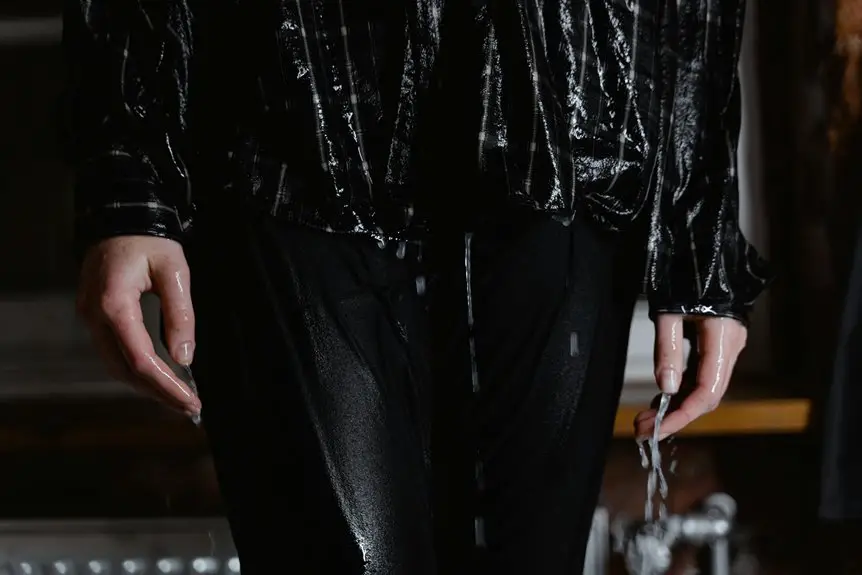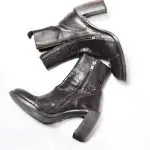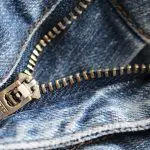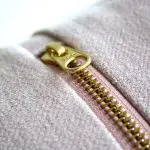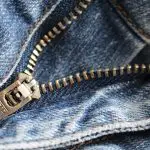If you’ve ever chosen workout gear, you’ve probably heard polyester praised for its moisture-wicking abilities. It pulls sweat away from your skin, helping you stay dry during exercise. But is it really the best option? While polyester has clear advantages, there are also drawbacks you might not expect. Understanding both sides can help you make smarter choices for comfort and performance. Let’s take a closer look.
Table of Contents
Key Takeaways
- Polyester’s hydrophobic fibers effectively pull sweat away from skin, keeping wearers dry and comfortable during physical activity.
- The fabric dries quickly, helping regulate body temperature and enhancing performance in hot and humid conditions.
- Polyester is durable and resists tearing and pilling, maintaining moisture-wicking properties through repeated washes.
- It may trap odors more than natural fibers and can feel less breathable during intense workouts.
- Compared to cotton or wool, polyester offers superior moisture management but environmental and sustainability concerns exist.
Understanding Polyester’s Moisture-Wicking Mechanism
Polyester excels at moisture-wicking because of its unique fiber structure. When you wear polyester, its hydrophobic fibers repel water, pushing sweat away from your skin instead of absorbing it.
This polyester structure creates tiny channels that guide moisture to the fabric’s surface, where it quickly evaporates. Thanks to advanced fiber technology, manufacturers can engineer polyester fibers with increased surface area, enhancing this wicking effect.
Polyester fibers have tiny channels that speed moisture evaporation, boosting their moisture-wicking power.
You’ll notice that these fibers don’t hold moisture, which helps keep you dry and comfortable. The combination of polyester’s chemical makeup and cutting-edge fiber technology makes it especially effective at managing sweat.
Understanding this mechanism helps you appreciate why polyester is often used in fabrics designed to keep you feeling fresh during physical activity.
Benefits of Moisture-Wicking Polyester in Athletic Wear
When you choose moisture-wicking fabrics for your workouts, you benefit from clothing that keeps sweat off your skin and speeds up drying times.
Polyester excels here by drawing moisture away efficiently, which means you stay drier and more comfortable throughout your exercise. This moisture management directly boosts your athletic comfort, reducing distractions caused by damp, clingy fabrics.
The performance benefits are clear: polyester’s quick-drying nature helps regulate your body temperature, allowing you to push harder and longer without overheating.
Plus, its durability means your gear maintains these advantages over time, even after repeated washes.
Choosing moisture-wicking polyester guarantees you get reliable, breathable wear that supports your activity and keeps you feeling fresh from start to finish.
Limitations and Challenges of Polyester as a Moisture-Wicking Fabric
Although moisture-wicking polyester offers many benefits, it also comes with some drawbacks you should consider.
One major limitation is breathability concerns. While polyester moves moisture away from your skin, it doesn’t always allow enough airflow, which can make you feel hot and clammy during intense workouts.
Additionally, polyester tends to trap odors more than natural fibers. This odor retention means your gear might smell unpleasant even after washing, requiring extra care to keep it fresh. You might find yourself needing specialized detergents or frequent washing cycles to combat this issue.
Understanding these challenges helps you make better choices about when and how to use polyester for moisture-wicking, balancing its performance with your comfort and hygiene needs.
Comparing Polyester With Natural Fibers in Moisture Management
When you compare polyester to natural fibers, you’ll notice key differences in how they handle moisture absorption and wicking.
Polyester tends to pull sweat away from your skin faster, but natural fibers often feel more comfortable and dry differently.
Understanding these contrasts can help you choose the right fabric for your needs.
Absorption Differences
Since polyester is a synthetic fiber, it handles moisture differently than natural fibers like cotton or wool.
You’ll notice that polyester has low absorption rates, meaning it doesn’t soak up water like natural fibers do. Instead, it repels moisture and allows it to move away from your skin quickly.
In contrast, cotton and wool have higher moisture retention, absorbing sweat and holding onto it, which can make you feel damp and uncomfortable.
This difference impacts how dry you feel during activity—polyester keeps you feeling dryer by limiting moisture buildup.
Wicking Efficiency Comparison
How does polyester stack up against natural fibers like cotton and wool in moisture management?
When you make a fabric comparison focused on wicking efficiency, polyester generally outperforms natural fibers by quickly pulling moisture away from your skin and spreading it across the fabric surface.
Here’s what you should know:
- Polyester’s synthetic fibers create channels that enhance moisture transport.
- Cotton absorbs moisture but holds onto it, reducing wicking efficiency.
- Wool naturally wicks moisture and regulates temperature but dries slower than polyester.
- Polyester’s quick-drying ability helps keep you feeling dry during intense activities.
Comfort and Drying
Beyond moisture-wicking efficiency, comfort and drying speed play key roles in how polyester compares to natural fibers like cotton and wool.
When you wear polyester, you might notice it dries much faster than cotton, thanks to its synthetic fibers that repel water. That quick drying helps keep you comfortable during workouts or humid days.
However, polyester often raises breathability concerns since it traps heat more than natural fibers, potentially affecting your temperature regulation.
On the other hand, cotton and wool offer superior breathability, allowing air to circulate and moisture to evaporate naturally, though they take longer to dry.
Enhancing Polyester’s Comfort and Wicking Performance Through Treatments
You can boost polyester’s comfort and moisture-wicking abilities with surface treatment techniques.
These treatments modify the fabric to pull sweat away from your skin more effectively.
Surface Treatment Techniques
Although polyester naturally resists moisture to some extent, manufacturers often apply surface treatments to boost its comfort and wicking abilities.
These surface treatments usually involve chemical coatings that modify the fabric’s surface tension, helping it pull sweat away from your skin more efficiently. This means you stay drier and cooler during activities.
Some common surface treatment techniques include:
- Hydrophilic coatings that attract moisture for quicker absorption
- Silicone finishes to enhance softness and reduce cling
- Plasma treatments that increase surface energy for better water spread
- Antimicrobial coatings to prevent odor from sweat buildup
Moisture Management Improvements
When manufacturers enhance polyester with advanced moisture management treatments, they greatly boost its ability to wick sweat and keep you comfortable.
These improvements rely on cutting-edge moisture reduction techniques that push polyester’s natural properties further, making it more breathable and quicker to dry. By applying specialized coatings or integrating hydrophilic fibers, polyester fabrics draw moisture away from your skin efficiently.
Staying on top of fabric innovation trends, manufacturers continuously develop new blends and finishes that improve moisture transport without compromising durability or softness.
As a result, you get activewear and everyday clothing that feels drier and fresher during intense activity or long wear. These moisture management improvements transform polyester from a basic synthetic to a smart fabric choice for anyone prioritizing comfort and performance.
Durability and Maintenance Considerations for Moisture-Wicking Polyester
Since moisture-wicking polyester is designed for active use, its durability and ease of maintenance become essential factors to take into account.
You want a fabric that withstands frequent wear and washing without losing performance. Key durability factors include fiber strength, resistance to abrasion, and colorfastness.
To keep your polyester gear in top shape, follow maintenance tips like washing in cold water, avoiding fabric softeners, and air-drying when possible.
Here are some durability and maintenance considerations for moisture-wicking polyester:
- Strong synthetic fibers resist tearing and pilling
- Holds up well under repeated wash cycles
- Avoid high heat to prevent damage
- Simple care routines preserve moisture-wicking properties
Environmental Impact and Sustainability of Polyester Fabrics
Because polyester is a synthetic fabric derived from petroleum, its environmental impact raises important concerns for anyone considering sustainable choices. You should know that traditional polyester production consumes significant energy and releases greenhouse gases. However, advances in recycling processes help reduce waste by turning plastic bottles into wearable fabric, making polyester more eco friendly.
| Factor | Impact |
|---|---|
| Raw Material | Petroleum-based, non-renewable |
| Energy Use | High during production |
| Recycling Processes | Reduce waste, lower carbon footprint |
| Eco Friendly Alternatives | Organic cotton, Tencel, hemp |
While polyester offers moisture-wicking benefits, weigh these factors and explore sustainable options to make informed choices aligned with your environmental values.
Frequently Asked Questions
How Is Moisture Content in Polyester Fabric Measured During Testing?
You measure moisture content in polyester fabric by evaluating moisture absorption under specific testing standards, like ASTM. You’ll weigh the fabric before and after exposure to moisture, calculating how much water it holds during the test.
What Are the Typical Test Conditions for Vertical Wicking Assessments?
When you perform vertical wicking assessments, you’ll test fabric samples under controlled humidity and temperature. You’ll consider wicking mechanisms and fabric thickness, as these factors influence how moisture travels upward through the material during testing.
Can Polyester’S Wicking Ability Vary With Fabric Tension or Orientation?
Like a river’s flow shifting with the terrain, you’ll find fabric structure and orientation impact polyester’s wicking ability. When you stretch or rotate it, moisture moves differently, so tension changes how it performs.
How Does Polyester’S Chemical Resistance Affect Its Moisture-Wicking Longevity?
You’ll find polyester’s chemical stability boosts its moisture-wicking longevity, resisting degradation from sweat and detergents. This chemical resistance is a key longevity factor, helping the fabric maintain performance even after repeated washes and exposure.
Are There Specific Recycling Methods for Moisture-Wicking Polyester Garments?
Imagine turning sweaty workout gear into fresh fabric again. You’ll find specialized recycling techniques for moisture-wicking polyester, focusing on eco-friendly options like chemical recycling and mechanical processes that help you reduce waste and support sustainability.
- How to Fold a Flawless Bullseye Tie-Dye Pattern - July 13, 2025
- Wet Dyeing vs. Dry Dyeing: A Complete Breakdown - July 13, 2025
- Step-by-Step Ombre Dyeing for a Professional Finish - July 13, 2025

